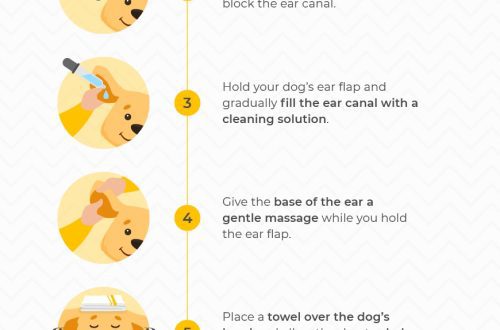
puppy feeding
Feeding is a very broad topic around which there are many myths. How to properly feedenkov? How is feeding a puppy different from feeding an adult dog?
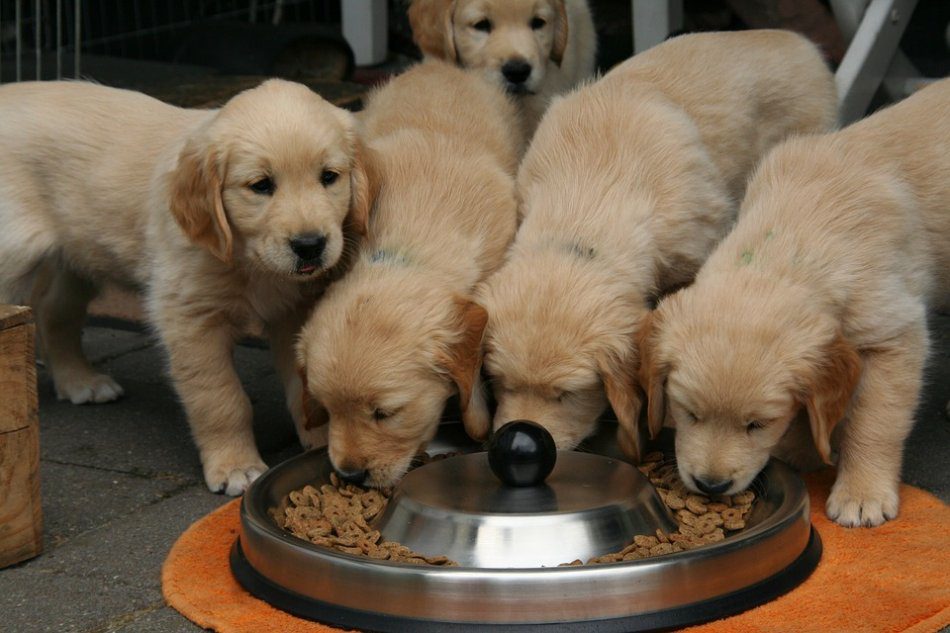
Photo: pixabay
Contents
- Puppy energy needs
- Protein in puppy food
- Fat in puppy feeding
- Calcium and phosphorus in puppy food
- Carbohydrates in puppy food
- Zinc needs of a puppy
- Copper needs of a puppy
- Puppy food guidelines
- Weight control when feeding a growing puppy
- How many times a day to feed a puppy
- Puppy feeding technique
- Disorders caused by improper puppy feeding
- Formation of eating habits in a puppy
Puppy energy needs
The highest energy requirements are in the puppy during the growth period, because the puppy grows very intensively, and he needs a lot of nutrients and minerals. This must be taken into account when feeding a puppy.
In the first days after weaning, the puppy’s body weight is small, and growth is intense, and 50% of energy is spent on maintaining life, and 50% on growth.
When 80% of body weight is reached, 8-10% of energy is spent on growth.
At a certain age, there comes a point when energy consumption no longer increases. For example, in German Shepherds (approximate adult weight 35 kg), this moment can come as early as 4 months. But keep in mind that everything is individual here, and German shepherds differ from each other.
Puppies from weaning to 50% of adult weight need 25 kcal per 100 g of body weight. And when a puppy gains 80% of its body weight, the energy requirements approach those of an adult dog. But keep in mind that any formulas are an average indicator.
Puppies of large and giant breeds are recommended a lower energy content – if there is a predisposition to developmental disorders of the musculoskeletal system, low-calorie food can be used from the moment of complementary feeding. A high-calorie diet can force growth, make it too fast, and this is dangerous.
Prevention of excess weight should begin from the moment of weaning. With normal feeding, the puppy will definitely gain the weight for which he is genetically “programmed”. But it is better if this happens later, without forcing.
Protein in puppy food
Puppies have the highest protein requirements after weaning.
Usually these needs are compensated, as more food is eaten (proportionately).
Most prepared foods contain sufficient protein – a minimum of 22% crude protein is required at 80% digestibility. This is the minimum you can go by.
The hypothesis that a high protein content harms the puppy’s musculoskeletal system has not been confirmed.
The high protein content does not pose a danger to the development of the puppy. So there is no need to limit protein for puppies at any stage of growth.
But if a puppy, for example, is fed only meat, and it is quite high-calorie, and it is not supplemented with minerals, in particular, calcium, this can cause disturbances in the formation of the musculoskeletal system.
Fat in puppy feeding
Separate fatty acids are normalized in feeding a puppy.
Fat is the main source of energy. Its content in the feed should be at least 5 – 10%. With a content of less than 10%, you need to select a source with a high content of essential linoleic acid (vegetable oils, with the exception of olive) and Omega-3 (fish oil).
Calcium and phosphorus in puppy food
Puppies require large, but not excessive amounts of calcium and phosphorus:
- For large breeds: 0,7 – 1,2% calcium (content in feed).
- For small breeds: 0,7 – 1,7% calcium (content in feed).
- 0,35% phosphorus (content in feed).
In adult dogs, the absorption of calcium depends on the needs, is regulated.
An excess of calcium and phosphorus is just as dangerous as a shortage, since in puppies 2 to 6 months old, calcium absorption is not regulated. Calcium absorption stabilizes by 10 months, but by this age, growth disorders, if the dog was predisposed to them, are already evident. Excessive presence of calcium is dangerous because puppies begin to develop disorders in the development of the musculoskeletal system, and in addition to when calcium absorption stabilizes normally, absorption will be suppressed against the background of excess calcium, and thus prerequisites are created for an adult dog to have calcium will not be absorbed in the required amount.
Given all this, it is easier and more convenient to adhere to the norms when feeding a puppy than to go beyond them.
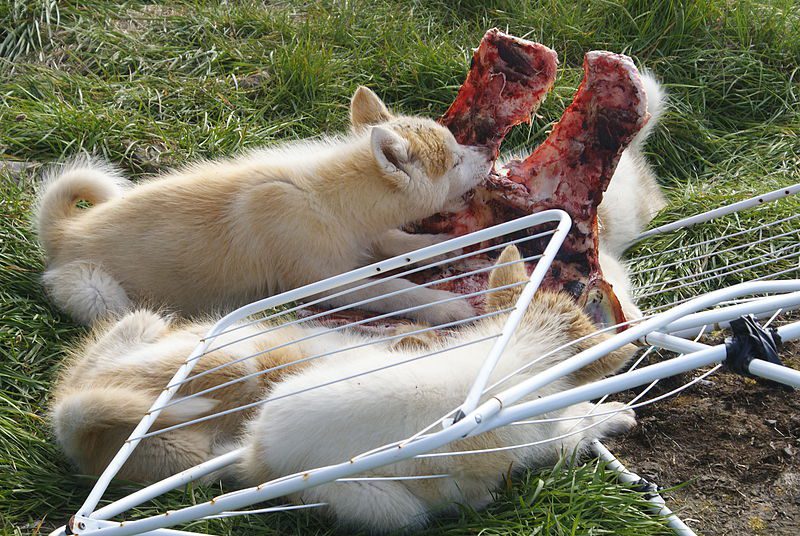
Photo: wikimedia
Carbohydrates in puppy food
A healthy dog does not actually need carbohydrates, so there are no rules here. But carbohydrates are an alternative source of energy, besides, without them, the technology for the production of dry feed is impossible, so they are still used. The content of about 20% carbohydrates in the food for puppies up to 4 months is sufficient.
In home diets, when feeding a puppy, you can do without carbohydrates. If the dog does not have a disease that limits the use of protein, and if the protein is of high quality and digested well enough that the dog does not develop diarrhea, carbohydrates are not needed.
When fed a high-protein, fatty, low-carbohydrate diet, puppies formed more fatty tissue.
Zinc needs of a puppy
In the first months of a puppy’s life, zinc requirements are high. They must be provided according to the rules.
Remember that high amounts of calcium and phosphorus interfere with the absorption of zinc.
Copper needs of a puppy
The puppy’s need for copper must be provided in accordance with the norms.
An indigestible form is copper oxide, which is used in some feeds. But this is not a source of copper, but a dye, so its presence cannot be taken into account.
A lack of copper can cause loss of pigment – graying of dark wool.
In extreme cases, elongated fingers (spread fingers) and anemia are formed.
Puppy food guidelines
Factor | Content in feed (CB) | |
Adult dog weighs less than 25 kg | The weight of an adult dog is more than 25 kg | |
Energy kcal OE/g | 3,5 – 4,5 | 3,2 – 3,8 |
Energy kJ OE/g | 14,6 – 18,8 | 13,6 – 15,7 |
Crude protein % | 22 – 32 | 20 – 32 |
Crude fat % | 10 – 25 | 8 – 12 |
Calcium % | 0,7 – 1,7 | 0,7 – 1,2 |
Phosphorus % | 0,6 – 1,3 | 0,6 – 1,1 |
As / P | 1:1 – 1,8:1 | 1:1 – 1,5:1 |
Weight control when feeding a growing puppy
Small and medium breeds (up to 25 kg) reach 50% of the weight by 4 months. Large breeds (over 25 kg) – at 5 months.
You can find growth charts on the Internet, enter your puppy’s breed, age and weight, and see if your pet is within the norm. But keep in mind that the information there is very approximate, since all these graphs are in the experimental phase and may differ significantly from each other.
When calculating the average puppy weight gain, you can focus on the following table:
Adult weight (kg) | 5 | 10 | 20 | 35 | 60 |
1 month (middle) | 0,5 | 0,7 | 1,1 | 1,5 | 2,1 |
2 month | 1,2 | 1,9 | 3,1 | 4,7 | 6,6 |
3 month | 1,9 | 3,3 | 5,9 | 9,6 | 13,2 |
4 month | 2,6 | 4,8 | 8,9 | 14,5 | 20,4 |
5 – 6 months | 3,5 | 6,5 | 12,2 | 20 | 30 |
End of 6 months | 4 | 7,5 | 14 | 23 | 36 |
12 months | 5 | 9,5 | 19 | 31 | 48 |
But these are very average figures.
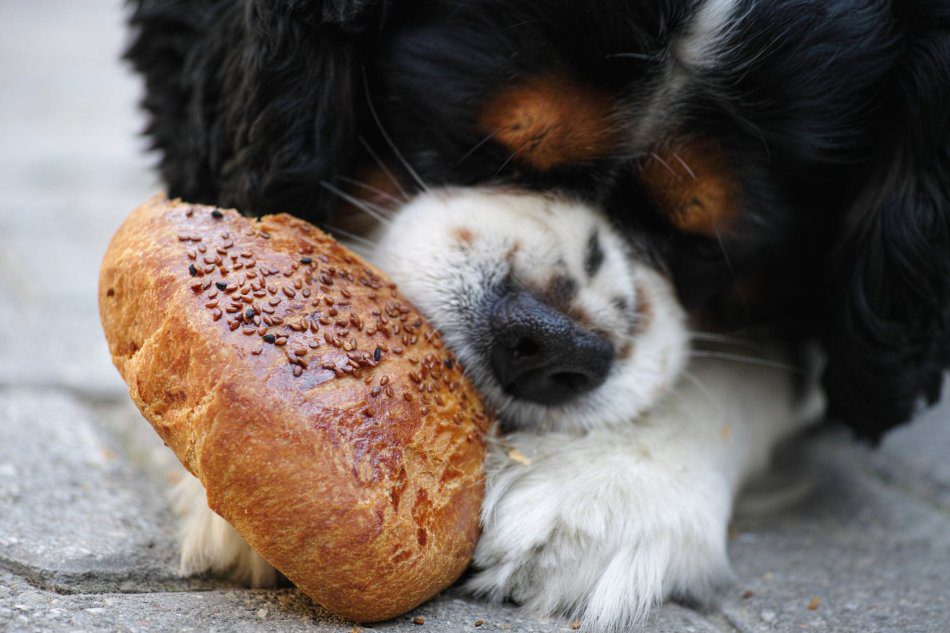
Photo: pexels
How many times a day to feed a puppy
The minimum feeding frequency for a puppy is as follows:
puppy age | Number of puppy feedings per day |
Up to 4 months | 4 |
4 – 6 months | 3 |
Older than 6 months | Can go to 2 |
Puppy feeding technique
There are several methods of feeding puppies, and each of them has both pros and cons.
Puppy feeding technique | Advantages | Disadvantages |
Free access to food. | You do not need to know much about the composition of the feed. | Weak control of the daily intake eaten. |
Calming effect when kept in a cage. | Predisposes to obesity and disorders of the musculoskeletal system. | |
Animals that are lower in rank have the opportunity to eat in sufficient quantities. | Poor control of individual dogs. | |
Portion feeding with a restriction on the daily rate. | Better rate control. | The need to calculate the daily rate. |
Appetite control. | ||
Better body weight control. | ||
Portion feeding with a time limit. | Daily rate control. | The amount to be eaten is inaccurate. |
Appetite control. | The risk of obesity and diseases of the musculoskeletal system as with free access. |
Undesirable as free access, and limited in time in the phase of rapid growth of the puppy. Studies have shown that puppies fed twice a day for 2 minutes had more weight, more body fat, and increased bone mineralization, as did free-fed puppies.
Best Practice: Accurately measured amount divided into 2 to 4 feedings (depending on age).
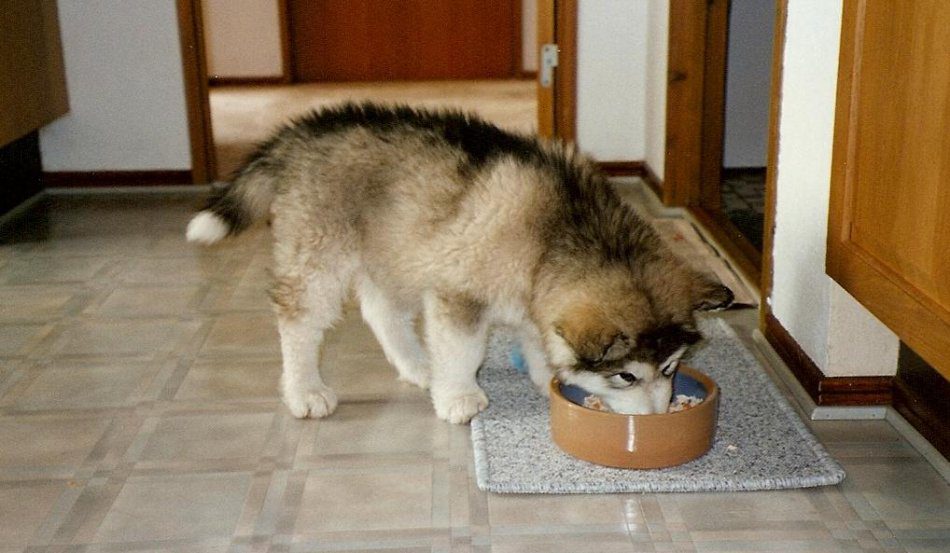
Photo: wikimedia
Disorders caused by improper puppy feeding
As a rule, we are talking about digestive disorders. The causes most often lie in the following: consumption of bones, consumption of fiber (for example, swallowing parts of sticks when playing), consumption of lactose and “heavy” proteins (for example, tendon bones or a large amount of viscera). All of these can cause diarrhea in a dog.
Formation of eating habits in a puppy
In this matter, the presence of rules is important, but not the rules themselves. For example, it used to be that the dog must eat last. But this rule does not make any sense, it is just an outdated myth, and there are a lot of such clichés and myths. What will be the rules will be decided by the owner, who establishes a harmonious relationship with the dog.
It is very important for puppies to learn how to get out of frustration when food is not available. It is important for them to learn to understand that not all resources are always available – this is normal and contributes to the formation of a sense of moderation. A constant feeling of complete satiety is unnatural.
Owners need to explain that this needs to be worked on, otherwise the dog will develop the habit of begging.
Of course, the dog has preferences in tastes, and this can be used. But in principle, the dog’s metabolism is designed in such a way that a wide variety of flavors is not required, but several sources of protein are desirable.
It is helpful to familiarize the animal with all food options (for example, in addition to dry food, it is good to know that there are homemade products or wet food, or vice versa) – in this case, the dog will be more flexible if he needs to be switched to another food.




